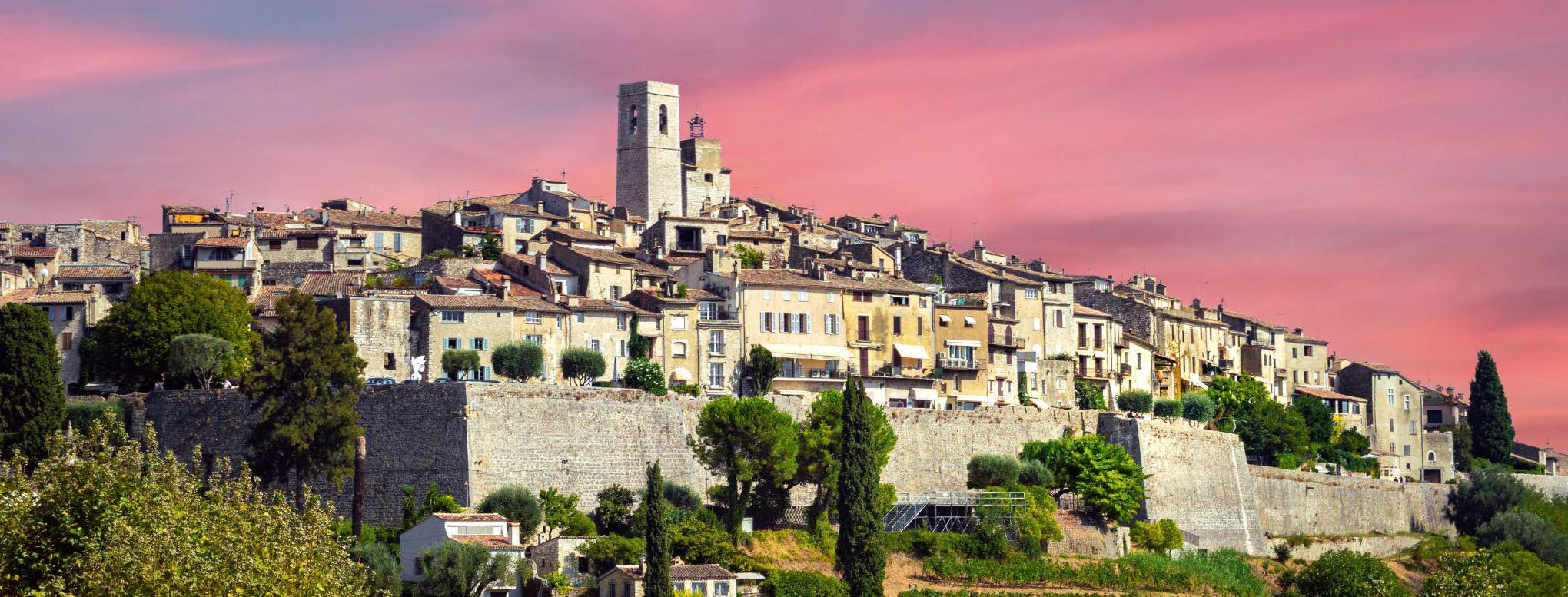What Makes France’s Saint-Paul de Vence So Magical? Its Light Fantastic
I first visited the Côte d’Azur in southern France as a fresh-out-of-college wanderer and immediately fell in love with the region’s seductive mix of sun and sea, herb and bloom, art and architecture, craft and cuisine, soul and sense.

I fell especially hard for a rocky medieval village perched on a verdant hilltop in its lavender-scented hinterlands: Saint-Paul de Vence.
Now I visit Saint-Paul whenever I can, and on my most recent pilgrimage last summer, its splendors once again seduced and inspired me.
I began my journey at the Fondation Maeght, an imaginative, inviting shrine to modern art that’s a leafy 20-minute walk from the village center.
Sunlight sluiced through the cool trees and spotlit the sculptures in the magnificent open-air exhibition garden that graces the museum’s entrance. There, the tangled boughs, freshening breeze and play of shadow and light enhance works by Joan Miró, Henry Moore, Alberto Giacometti, Alexander Calder and Hans Arp.
All sculptures, I thought, should be allowed to stretch their limbs this way.
Then I wandered through the interior galleries of the museum and lingered before its small but exceptional collection of modern masterpieces by Miró, Pierre Bonnard, Wassily Kandinsky, Georges Braque, Pablo Picasso, Fernande Léger and other giants. The thrilling theories of the surrealists once again came to life for me, the impassioned collaborations of poets and painters, the breaking of barriers and exploring of possibilities, the fervent faith that art could make a difference.
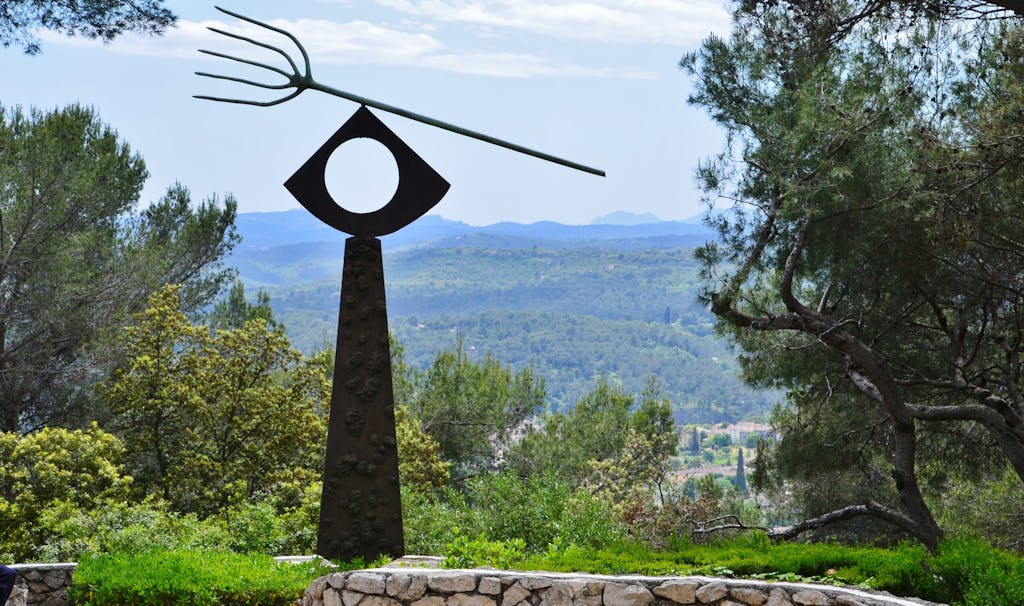
Returning to the courtyard and pausing in front of a pine-framed Miró sculpture called “La Fourche,” I felt as if the years were slipping off my shoulders, as if the combination of art and light were somehow reawakening me, pouring robust new colors and energies into my own artistic palette.
I felt like a pine tree or a Chagall painting, and I rejoiced once again in the sense that the only real limits on our aspirations and achievements are the limits we impose on ourselves.
Where time slows

Noon approached, and I hastened back to the village’s heart, where I had been lucky enough to reserve a table at the Colombe d’Or, a storied restaurant-and-inn where I’d dreamed of dining for decades. Paul Roux, son of a local farmer, founded it in the early 1920s and befriended many of the painters who moved to the region for its climate, sunlight and clear air.
When these painters couldn’t pay for their meals or nights at his inn, Roux accepted their paintings instead. Over the years, he accumulated a museum-quality collection of works by such artists as Bonnard, Raoul Dufy, Maurice Utrillo, Chagall, Picasso, Braque, Henri Matisse, and Miró. These are still on display for diners to savor.
Lunch at La Colombe d’Or proved as enchanting as the restaurant’s history. Ensconced under a white parasol on a sun-mottled terrace, a Leger mural wrought into the wall on my right, I admired the living landscape: rolling, verdant hillsides lush with vineyards and cypress, olive, orange, and fig trees, and pastel villas the color of wheat, sand and rose.
Amid a choreography of weaving waiters and seductive smells, an artful succession of specialties appeared: fragrant truffle salad followed by savory grilled sea bream with green beans, ending with plump red raspberries.
Time slowed as I feasted, and I surrendered to the symphony of silverware on china, the splash of wine into glasses, the mellifluous, multilingual chatter of diners in summery clothes.

I vowed to hold forever the memory of this enchanted little world: the sunlight catching in the branches above and blessing the hills beyond, the perfume of the flowers mingling with the scents of the chef’s seasonings, the artwork all around, the rough-hewn stones beneath me, the flavorful fish and bread before me, the wine as golden as the flowers, the tablecloth as white as the parasol.
It was an ineffable moment of ease and artfulness, a soul-fulfilling scene of life lived to the fullest.
The perfection of a portrait by nature and humankind
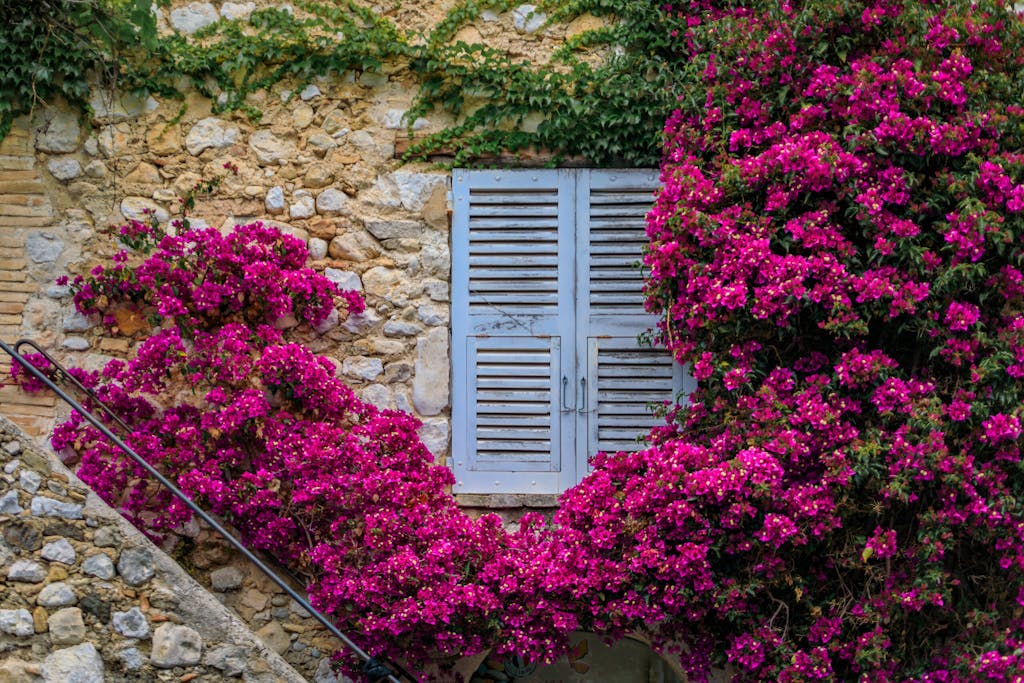
After lunch I meandered in a kind of trance through the village’s medieval maze of well-preserved lanes and battlements, whose dwellings now house galleries, restaurants, crafts shops and cafes. Cars are limited to residents, so the village seemed livable: Green vines arched over alleyways, purple tendrils clambered up sun-splashed walls, crimson flowers burst from window boxes, and visitors and residents ambled in easy harmony.
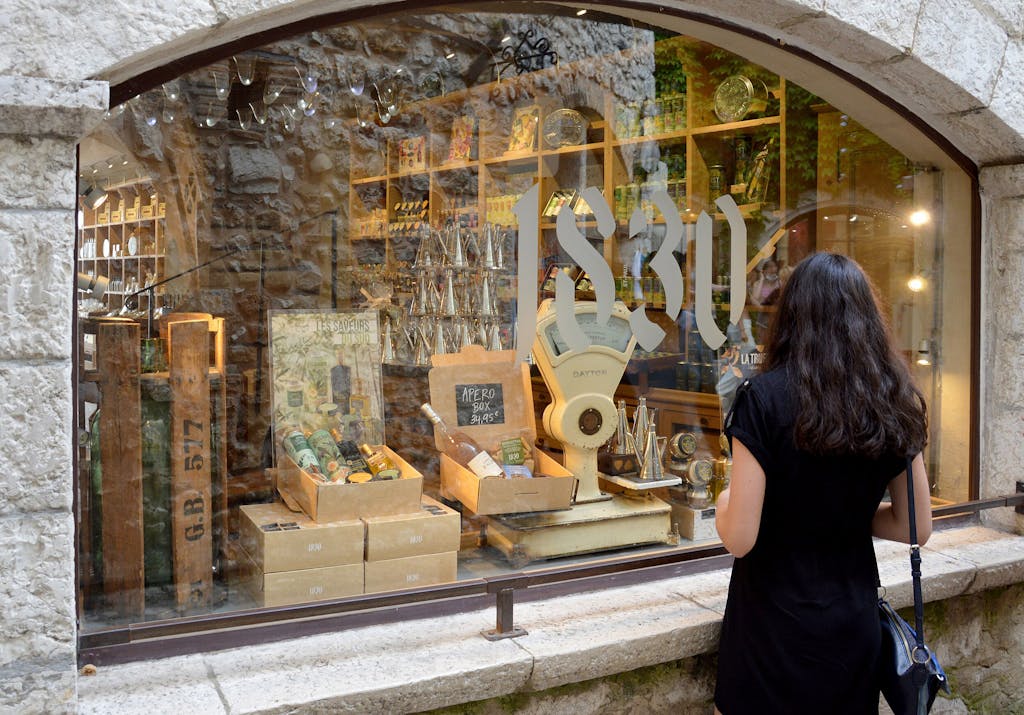
The streets embodied tranquility and tastefulness: The galleries were artful compositions of colorful canvases and provocative sculptures. In the shops, the platters and bowls, scarves and shawls, reflected the rich, earthy tones of the hills and gardens outside. In the alleyways, the fragrances of herbs and perfumes mingled with the scents of garlic and pizza.
I came to the Place de Gaulle, where I watched four gentlemen in berets and vests play a lively late-afternoon game of pétanque, which is related to bocce.
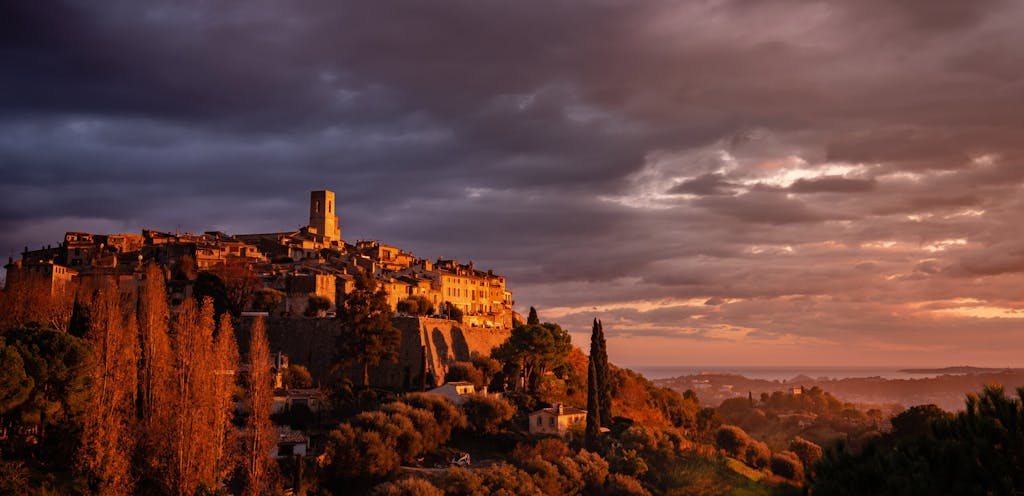
As the slanting sun painted the hills in golden, I feasted on a pizza and a glass of vin rosé on a vine-shaded terrace, then walked through the winding streets, slowing into a peaceful quietude now that the tourist throngs had departed.
Dusk’s grainy light softened the chiseled walls; the cobbled alleys echoed with ancient footfalls. Lamplight shone through windows here and there, and the music of laughter and clinking glasses floated on the air. I looked at the 14th-century tower silhouetted against the darkening sky where a few pin-prick stars had begun to shine. I lingered as the village deepened into night, until the moon lay a veil of Provençal lace over the scene and a whiff of lavender rose on the breeze.
I stopped, sighed and closed my eyes. Then I opened my arms wide to embrace it all.
Ah, Saint-Paul.
